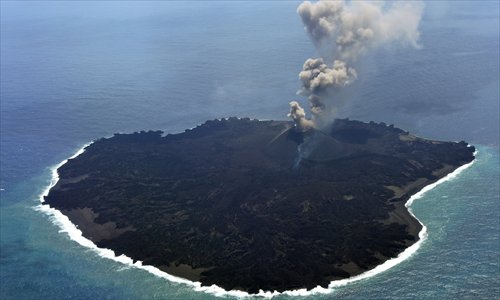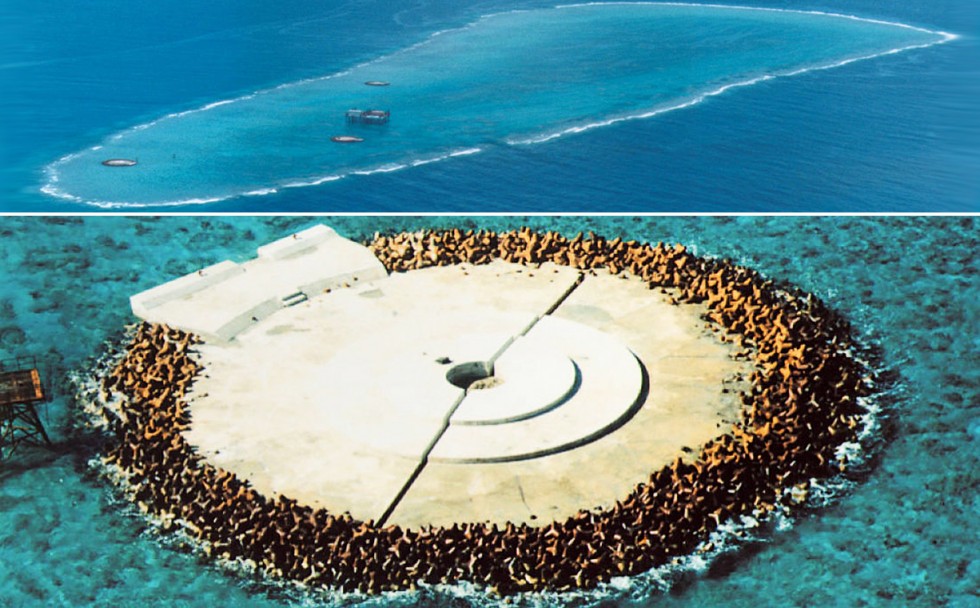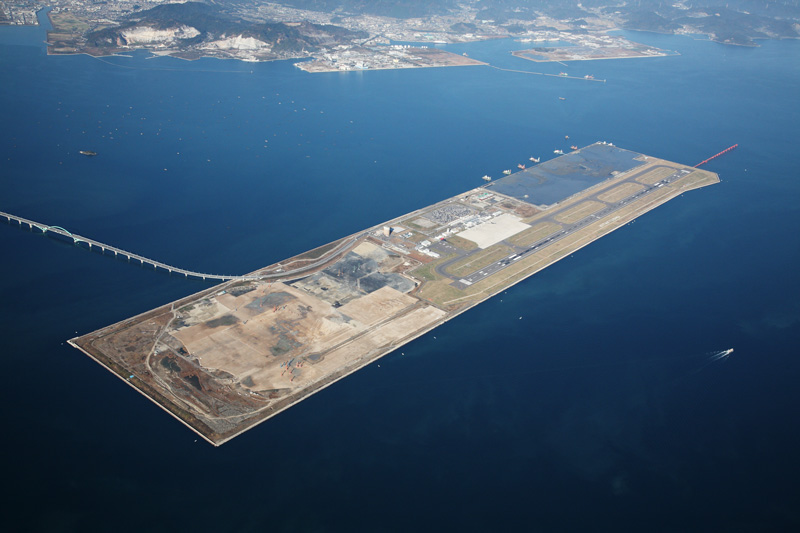How the Hague Ruling against China Could Spell Trouble for Japan
ASIA--PACIFIC, 18 Jul 2016
Julian Ryall – South China Morning Post
Japan has built structures on uninhabited rocks 1,740 km from Tokyo to mark its territory – just like China has done in the South China Sea.
14 Jul 2016 – Tokyo has been quick to applaud the decision by the Permanent Court of Arbitration in The Hague on Beijing’s claims to reefs and atolls in the South China Sea, but experts warn that the ruling could come back to haunt Japan.
Of particular concern, they point out, should be the court’s ruling that the “islands” are little more than rocks that cannot support human habitation and economic life and cannot therefore be used to extend China’s control over the region.
Beijing arguably learned the tactic of enlarging rocks that would otherwise be submerged at high tide from Japan, which has spent billions of yen on reinforcing and enlarging Okinotorishima. This tiny atoll, 1,740 km south of Tokyo extends Japan’s exclusive economic zone over some 400,000 square km of the Pacific Ocean – larger than Japan’s total land area.
“The Hague ruling completely delegitimises Japan’s claim to those waters,” said Stephen Nagy, an associate professor of politics at Tokyo’s International Christian University.
“Under this ruling, if it was to be applied to Japan, then Japan would no longer have that EEZ,” he told the South China Morning Post.
“It’s as simple as that.”

The newly created Nishinoshima island in the Ogasawara island chain, 1,000 kilometers south of Tokyo
Beijing has protested Japan’s use of Okinotorishima to extend its EEZ in the past, but given that it is using a similar approach to forward its own territorial claims in the South China Sea, Nagy feels it is unlikely that Beijing will file a complaint with The Hague.
Japan’s Pacific claims fuelled by search for resources, Chinese expansionism
South Korea and Taiwan, on the other hand, could very well do so.
Seoul has sided with China in opposing Tokyo’s claims on Okinotorishima, while Taiwan disputed Japan’s rights earlier this year and dispatched coast guard cutters to protect fishing boats operating close to the island.
By designating the EEZ that extends 200 nautical miles from Okinotorishima, Tokyo has given itself access to a vast area rich in fishing resources and – potentially more importantly – natural resources.

The seabed surrounding the island is believed to be littered with trillions of yen worth of resources.
Japan is particularly keen to develop vast deposits of methane hydrates. A solid compound containing high levels of methane trapped in a crystal structure of water, methane hydrate is seen as an important source of energy in the future.
Shintaro Ishihara, the man who stoked China-Japan tensions
In February, the Japanese government announced that it was earmarking Y13 billion (HK$838.3 million) for rebuilding facilities on Okinotorishima. The territory covers a mere 9 square metres and, according to critics of Japan’s claim to sovereignty, is only above water because two parts of the coral reef have been protected by concrete embankments and blocks to prevent them from disappearing beneath the waves for good.
The Hague ruling completely delegitimises Japan’s claim to those waters. — Stephen Nagy
The Foreign Ministry in Tokyo reaffirmed its stance that Okinotorishima is an island and that the Hague ruling will have no impact on that designation.
“The ruling in The Hague is not on the status of Okinotorishima and is binding on the two parties in the dispute, the Philippines and China,” Kazumi Yamada, principle deputy director of the ministry’s Oceans Division, said.
She declined to speculate on another country taking the Okinotorishima case to The Hague.
The one bright spot for Japan, Nagy suggested, would be over the question of the Senkaku islands, claimed by China, where the archipelago is known as the Diaoyus. Tokyo is likely to seize on the argument that it has sovereignty rights to the islands on the grounds that it has effectively managed the territory for most of the last 120 years.
_______________________________________
This article appeared in the South China Morning Post print edition as: Hague leaves Tokyo between rock and hard place.
DISCLAIMER: The statements, views and opinions expressed in pieces republished here are solely those of the authors and do not necessarily represent those of TMS. In accordance with title 17 U.S.C. section 107, this material is distributed without profit to those who have expressed a prior interest in receiving the included information for research and educational purposes. TMS has no affiliation whatsoever with the originator of this article nor is TMS endorsed or sponsored by the originator. “GO TO ORIGINAL” links are provided as a convenience to our readers and allow for verification of authenticity. However, as originating pages are often updated by their originating host sites, the versions posted may not match the versions our readers view when clicking the “GO TO ORIGINAL” links. This site contains copyrighted material the use of which has not always been specifically authorized by the copyright owner. We are making such material available in our efforts to advance understanding of environmental, political, human rights, economic, democracy, scientific, and social justice issues, etc. We believe this constitutes a ‘fair use’ of any such copyrighted material as provided for in section 107 of the US Copyright Law. In accordance with Title 17 U.S.C. Section 107, the material on this site is distributed without profit to those who have expressed a prior interest in receiving the included information for research and educational purposes. For more information go to: http://www.law.cornell.edu/uscode/17/107.shtml. If you wish to use copyrighted material from this site for purposes of your own that go beyond ‘fair use’, you must obtain permission from the copyright owner.
